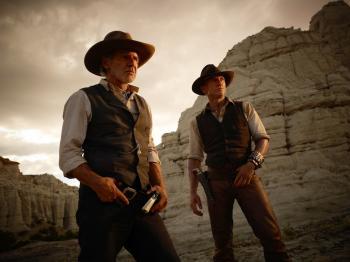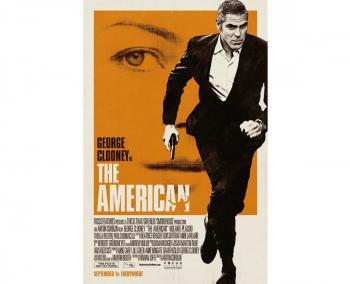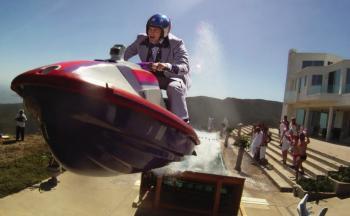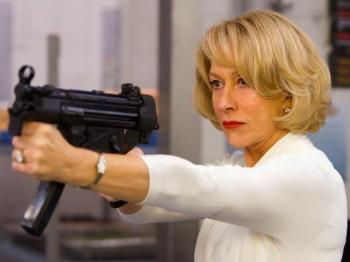As fans of J.J. Abrams’ various output already knew (Alias/Lost/M:i:III/Cloverfield/Fringe), the quality of Star Trek’s relaunch was never in doubt. Everything the director extraordinaire has involved himself with has turned out to be golden. This is Star Trek all right, but not as we once knew it.
Audaciously setting up an alternate reality, Star Trek opens with the energising and eye-fetchingly rendered destruction of the USS Kelvin and the birth of one James T. Kirk.
Destroyed by a Romulan mega-ship from the future, events as “Trekkers” have previously known them are irrevocably altered. Flash forward to the future and the Federation are on the verge of launching their new flagship starship the USS Enterprise, under the capable command of Capt. Christopher Pike (Bruce Greenwood – National Treasure 2) and some fresh-faced recruits.
Little do they know, though, that still lurking among the stars are the revenge-seeking Romulans (led by Eric Bana’s slightly underwritten chief villain Nero), biding their time to strike. That time has now come after the emergence of an old and familiar face means their endgame can finally be put in motion after 25 years. The only thing standing in their way is one ship and her new crew, most notably one headstrong human (the unnaturally large noggin also known as Chris Pine – Smokin’ Aces) and an unemotive half-Vulcan/half-human (Heroes’ Sylar also known as Zachary Quinto).
Abrams’ Star Trek is more mythical, more action-orientated and much more kinetic than any previous incarnation. It’s arguably less highbrow Roddenberry and more (whisper it) warping in the direction of another well-known space saga from the 70s. Some of the pointy-ear wearing brigade may well grumble (as may fans of social sci-fi Battlestar Galactica) at the lack of pondering, politicking and weighty themes that the original relied on, but the majority will be too busy being wowed by the self-referential nods and maestro Michael Giacchino’s music.
Of course this isn’t all action and no character. In fact it’s surprising how many little character building moments are allowed amidst the bustle. This is also the most contentious part of the whole enterprise: will audiences accept their favourite character in their new, hand-picked, pretty-young-thing guises?
Well, as it goes, they probably couldn’t have been more perfectly judged. Sylar as Spock: that one was a shoo-in but Quinto still impresses. As was Zoe Saldana as Uhura: brains and beauty in one handy little package. Everyone else though: inspired. For starters, the man previously known as one part of stoner comedy duo Harold and Kumar, John Cho as Sulu: surprisingly good when serious and handy with a sword. Anton “Babyface” Yelchin as Chekov: cracking comedy “wussian” accent and a vivacious energy essential to the character here. Simon Pegg as Scotty: the accent’s toned down from James Doohan’s effort but no less ropey and he comes into the film a little late in the game, but makes an impacting and promising screen presence nevertheless. Then there’s “best thing” Karl Urban as Bones: leftfield casting or what? Just what the doctor ordered as it turns out though. Where J.J. spotted this unforgettable performance from amongst his previous is anybody’s guess (Eomer in LOTR/the baddie in Bourne Supremacy/John Grimm in Doom).
Who this leaves, of course, is perhaps the most important piece of the puzzle: Chris Pine in the unenviable position of playing Kirk. Different but enough the same, cocky and charming, arrogant and irrepressible, but most importantly winningly likeable from the off, Pine’s Kirk is categorically not Shatner’s Kirk (and he definitely doesn’t try to imitate The Shat’s characteristic dialogue delivery style, thankfully). But then that’s the point: these times, these people they are a-changed and most dramatically, at least to begin with, is Kirk.
But the best thing of all about this Trek are the little flourishes that Abrams shows particular flair for. Like the notable differences between the pristine-looking THX-1138 inspired bridge of the Enterprise, or the Titanic inspired industrial feel to the heart of the ship. Or the subtle change they’ve made to how people disappear and reappear when transported. Or the way that phasers now change settings between stun and kill (the coolest “reload” since Arnie and that shotgun in T2). Or the way in which we see the Enterprise streaking through space at warp speed. It’s obvious in these touches that this was a real labour of love for everyone involved.
[etRating value=“ 4.5”]
Audaciously setting up an alternate reality, Star Trek opens with the energising and eye-fetchingly rendered destruction of the USS Kelvin and the birth of one James T. Kirk.
Destroyed by a Romulan mega-ship from the future, events as “Trekkers” have previously known them are irrevocably altered. Flash forward to the future and the Federation are on the verge of launching their new flagship starship the USS Enterprise, under the capable command of Capt. Christopher Pike (Bruce Greenwood – National Treasure 2) and some fresh-faced recruits.
Little do they know, though, that still lurking among the stars are the revenge-seeking Romulans (led by Eric Bana’s slightly underwritten chief villain Nero), biding their time to strike. That time has now come after the emergence of an old and familiar face means their endgame can finally be put in motion after 25 years. The only thing standing in their way is one ship and her new crew, most notably one headstrong human (the unnaturally large noggin also known as Chris Pine – Smokin’ Aces) and an unemotive half-Vulcan/half-human (Heroes’ Sylar also known as Zachary Quinto).
Abrams’ Star Trek is more mythical, more action-orientated and much more kinetic than any previous incarnation. It’s arguably less highbrow Roddenberry and more (whisper it) warping in the direction of another well-known space saga from the 70s. Some of the pointy-ear wearing brigade may well grumble (as may fans of social sci-fi Battlestar Galactica) at the lack of pondering, politicking and weighty themes that the original relied on, but the majority will be too busy being wowed by the self-referential nods and maestro Michael Giacchino’s music.
Of course this isn’t all action and no character. In fact it’s surprising how many little character building moments are allowed amidst the bustle. This is also the most contentious part of the whole enterprise: will audiences accept their favourite character in their new, hand-picked, pretty-young-thing guises?
Well, as it goes, they probably couldn’t have been more perfectly judged. Sylar as Spock: that one was a shoo-in but Quinto still impresses. As was Zoe Saldana as Uhura: brains and beauty in one handy little package. Everyone else though: inspired. For starters, the man previously known as one part of stoner comedy duo Harold and Kumar, John Cho as Sulu: surprisingly good when serious and handy with a sword. Anton “Babyface” Yelchin as Chekov: cracking comedy “wussian” accent and a vivacious energy essential to the character here. Simon Pegg as Scotty: the accent’s toned down from James Doohan’s effort but no less ropey and he comes into the film a little late in the game, but makes an impacting and promising screen presence nevertheless. Then there’s “best thing” Karl Urban as Bones: leftfield casting or what? Just what the doctor ordered as it turns out though. Where J.J. spotted this unforgettable performance from amongst his previous is anybody’s guess (Eomer in LOTR/the baddie in Bourne Supremacy/John Grimm in Doom).
Who this leaves, of course, is perhaps the most important piece of the puzzle: Chris Pine in the unenviable position of playing Kirk. Different but enough the same, cocky and charming, arrogant and irrepressible, but most importantly winningly likeable from the off, Pine’s Kirk is categorically not Shatner’s Kirk (and he definitely doesn’t try to imitate The Shat’s characteristic dialogue delivery style, thankfully). But then that’s the point: these times, these people they are a-changed and most dramatically, at least to begin with, is Kirk.
But the best thing of all about this Trek are the little flourishes that Abrams shows particular flair for. Like the notable differences between the pristine-looking THX-1138 inspired bridge of the Enterprise, or the Titanic inspired industrial feel to the heart of the ship. Or the subtle change they’ve made to how people disappear and reappear when transported. Or the way that phasers now change settings between stun and kill (the coolest “reload” since Arnie and that shotgun in T2). Or the way in which we see the Enterprise streaking through space at warp speed. It’s obvious in these touches that this was a real labour of love for everyone involved.
[etRating value=“ 4.5”]





